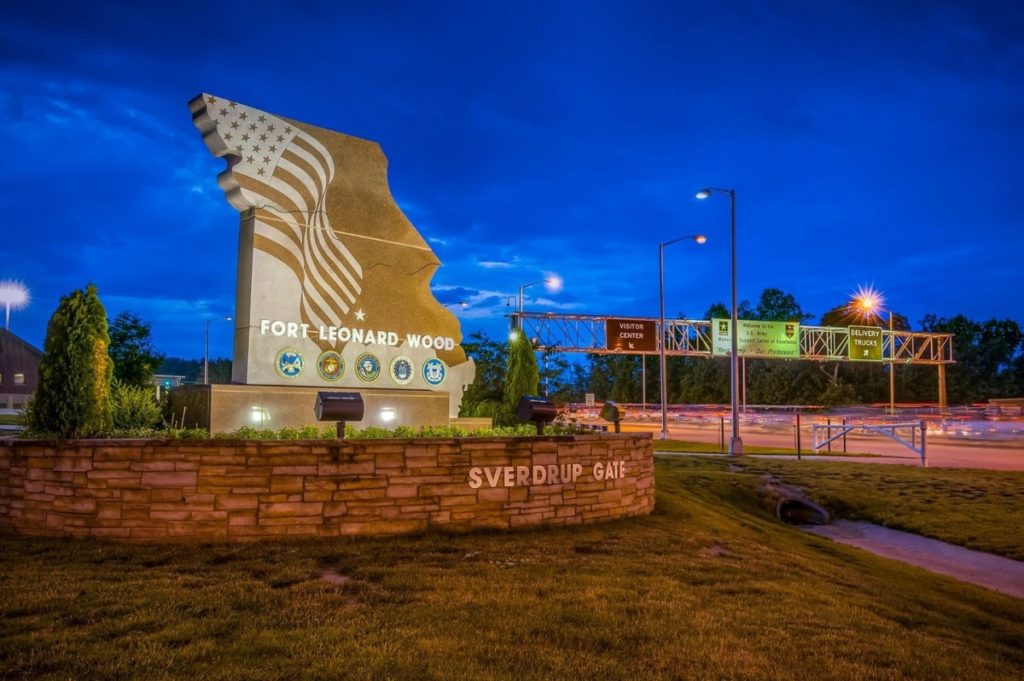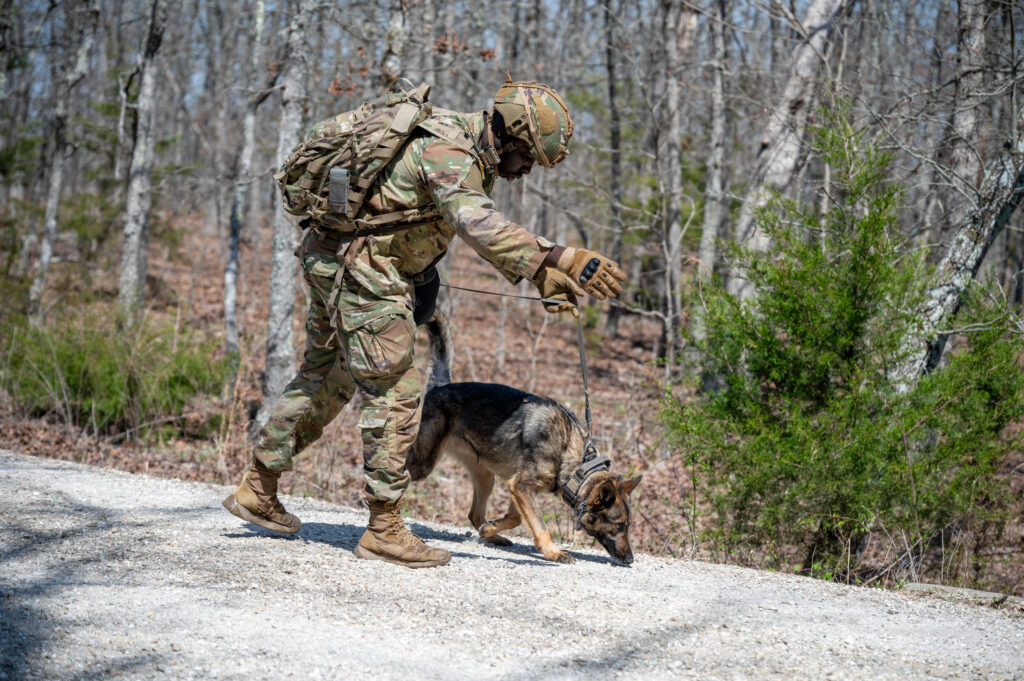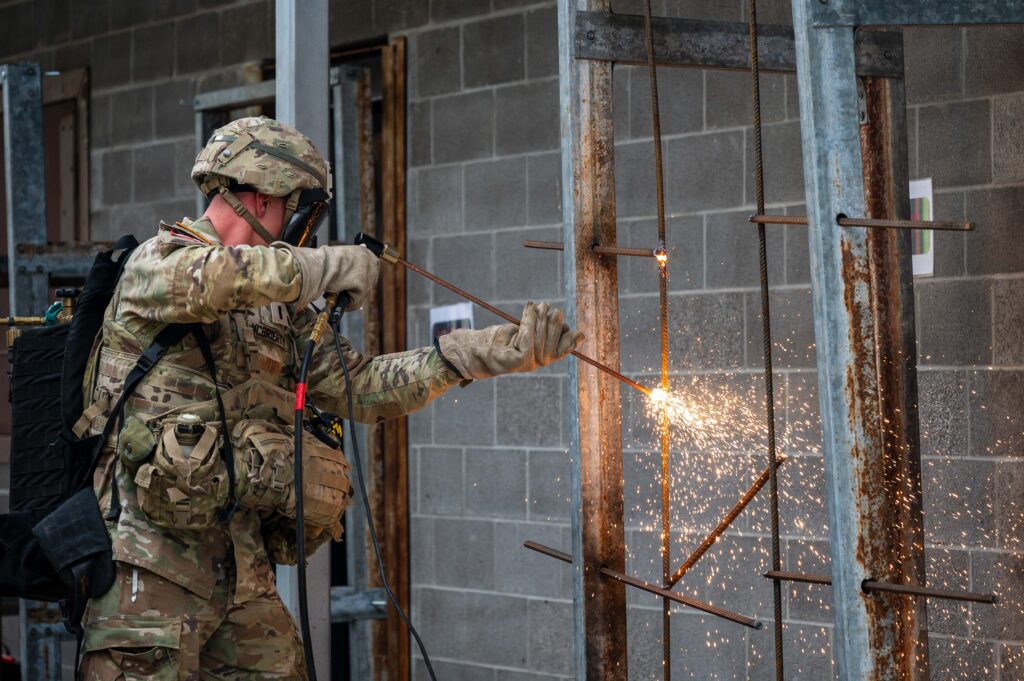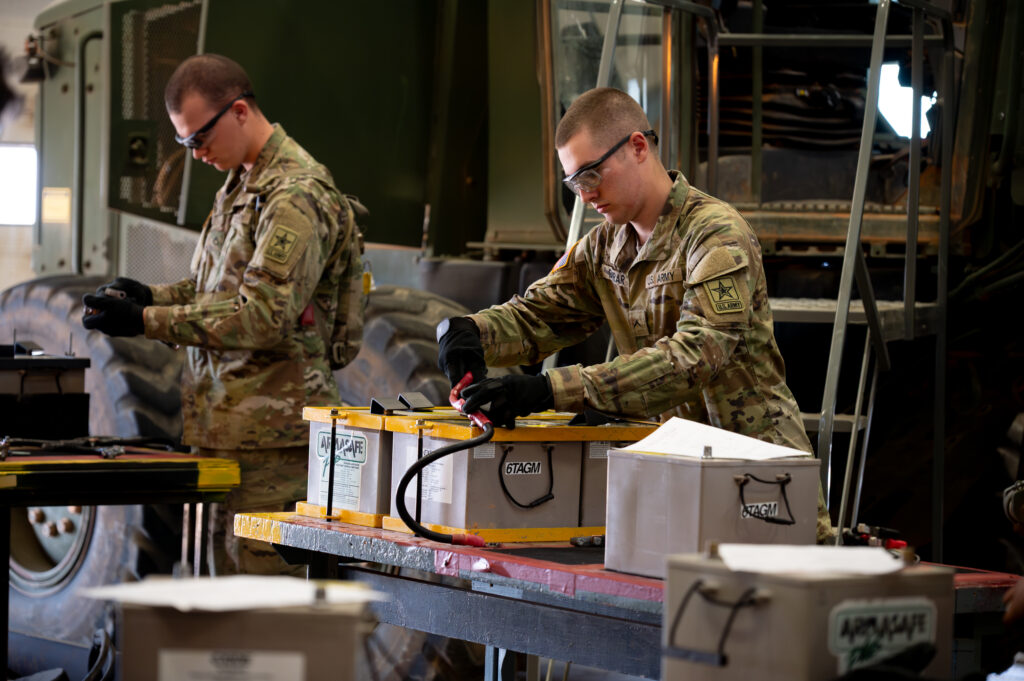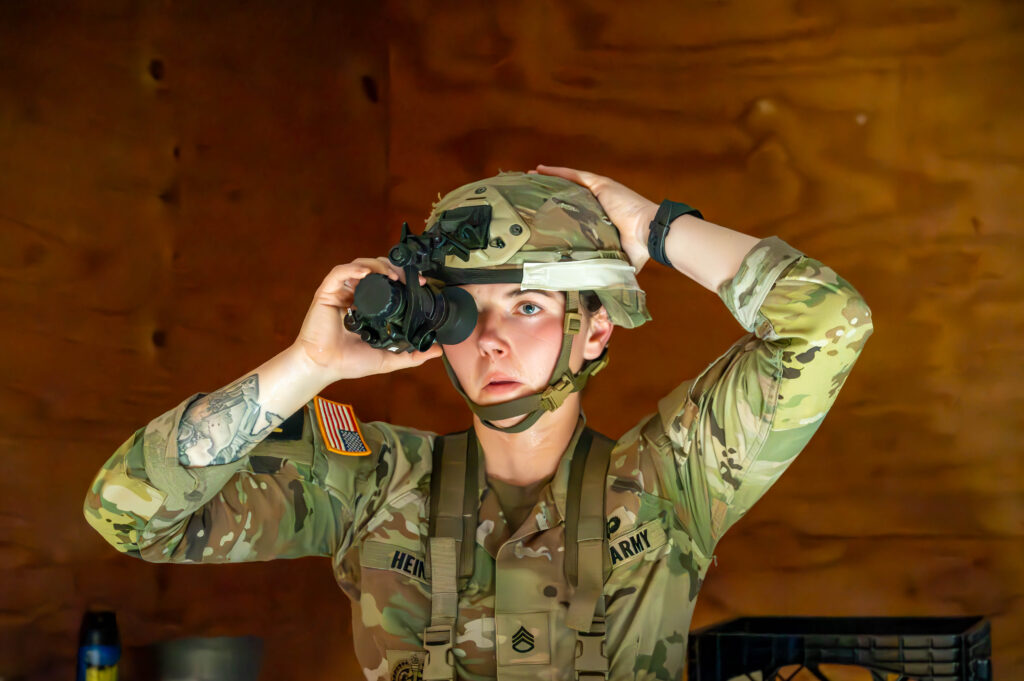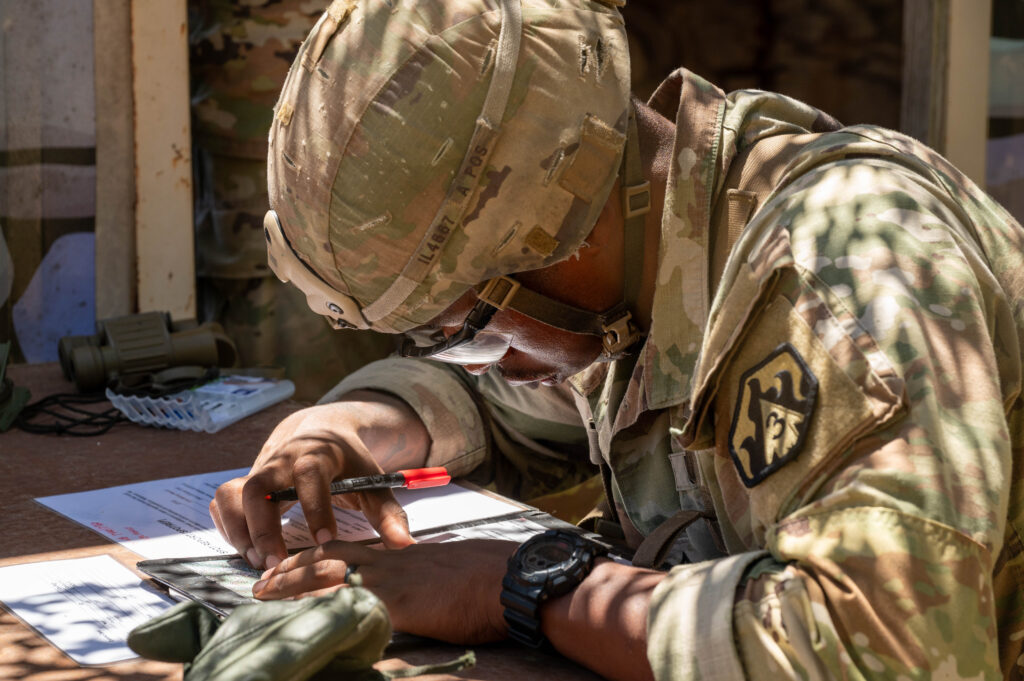
By Marti Yoshida
Public Affairs Office
FORT LEONARD WOOD, Mo. (April 26, 2018) — Best Sapper teams from across the Army set out to demonstrate their combat engineer skills during the 12th annual Lieutenant General Robert B. Flowers Best Sapper Competition, held April 16-18, at Fort Leonard Wood, Missouri.
Sgt. 1st Class Robert Clark and Capt. Rudy Chelednik, 21st Brigade Engineer Battalion, 3rd Brigade Combat Team, 101st Airborne Division, Fort Campbell, Kentucky, representing Team 13, claimed 1st Place in this year’s competition.
Team 23, 1st Lt. Thomas Hoyt and Sgt. Gary Coggins, 1st Engineer Battalion, 1st Armored Brigade Combat Team, 1st Infantry Division, Fort Riley, Kansas, took 2nd Place; while Team 12, 1st Lt. Louis Tobergte, and 1st Lt. Andrew Warner, 54th Engineer Battalion, 173rd Airborne Brigade Combat Team, Vicenza, Italy, finished in 3rd Place.
Team 13 proved that technical and tactical proficiency, not superstition, contributed to the outcome of the grueling 3-day event.
“As soon as we found out we were Team 13, I looked at Capt. Chelednik and said, ‘lucky number 13,’” Clark explained. “Everyone had superstitions, but I think we had a really good feeling about it.”
The junior officer-senior NCO team, who had previously served as a command team together, set out with a mission.
“We made a decision to give the competition a shot and show Solders no matter who you are, you have to earn the right to wear the Sapper Tab every day,” Chelednik said. “We wanted to show Soldiers that we could still lead from the front and inspire other Soldiers to continue to take the torch we carry, and lead it.”
Clark added, “I was hoping we could inspire our Soldiers and all the Soldiers of the 101st Airborne Division that no matter who you are, no matter what you do, always strive to be greater than you were the day prior, and I think we’ve accomplished that.”
This year, 37 of the 40 registered teams, including the first-ever Marine Corps team, completed the competition, but getting to the castle finish line on the final day was no easy task.
“From day one of the Sapper Leader Course, to the competition, we preach that it pays to be a winner,” Command Sgt. Maj. Jerimiah Gan, 1st Engineer Brigade command sergeant major, said. “When you get out front and you’re able to stay out front, it gives you even more time to take a knee and drink some water and not play catch-up the entire competition.”
Gan explained in previous years, the competition kicked off “bright and early” on Day 1 with a physical event.
“This year, the first event didn’t kick off until 1700 in the afternoon,” he said. “They had to do buddy carries, the physical endurance course, and the obstacle course with a protective mask. They really push their bodies to limits that is unbelievable for most athletes, let alone your average person.”
“By conducting such a grueling event, we put them all on an even scale,” Gan added. “It makes them slow down a little and think, and that really cuts back on injuries.”
From there, Sappers completed the first night helocast, where units were flown by a Chinook helicopter to a maritime insertion point.
“The moment I touched the water out of the helicopter, I was like, ‘no,’” said Hoyt. “If it weren’t for Sgt. Coggins, I would have hit a breaking point.”
After getting out of the frigid water, they were placed into squads to carry a Zodiac boat, weighing up to 400 pounds, to another water location, where they paddled their boat to the next event.
Day 2 included demolition events, squad events and breaching lanes.
“After two hours into the second day, it feels like you’re walking on broken glass with bare feet,” 1st Lt. Paul O’Brien, representing Team 21, 1st Engineer Battalion, 1st Armored Brigade Combat Team, 1st Infantry Division, Fort Riley, Kansas, said. “The collective time on your feet with a lot of weight, moving 50 miles over two days, was the most challenging.”
By Day 3, competitors were ushered into a round-robin training circuit to test their ability to execute platoon or smaller element-level engineer tasks.
Hundreds of spectators came out to Gammon Field to watch the competitors cross the finish line during the X-mile event, which is called such, because the distance and number of tasks is undisclosed.
“There’s a fan base for every group,” Gan said. “The 82nd Airborne Division always has a good showing and the 101st brings their A-game. This year, I’ve seen a lot more spectators, even from places like Vicenza, Italy, out here. It’s good they all come together.”
Command Sgt. Maj. Delfin Romani, 54th Engineer Battalion, 173rd Airborne Brigade Combat Team, came from Vicenza, Italy, to cheer on three of his unit’s teams, and he explained the value of the competition.
“This competition is a testament to their physical fitness level,” Romani said. “It is super important because they showcase themselves as Sapper leaders and they also showcase their unit. It motivates people not only to compete, but to do better than just good enough.”
Pam and Carl Day traveled from Kentucky to watch their son, 1st Lt. Cameron Day, represent Team 11, from the 27th Engineer Battalion, 20th Engineer Brigade, XVIII Airborne Corps, Fort Bragg, North Carolina.
“It’s been hard just watching, but we’re so thankful we had the opportunity to come out and spectate,” Pam Day, said.
To encourage their son, the Day’s offered him the following advice: “We know you can do it, just focus and give it your best … and practice.”
Military spouses joined in to spectate, too.
“This is my first time coming to a spectator event,” said Ryane Zwolinski, spouse of 1st Sgt. Matthew Zwolinski, who is the chief instructor of the Sapper Leader Course. “I’ve been following the competition on Twitter and Facebook, which is great. They did a great job keeping everyone up to date.”
“I love being part of the Sapper community,” she added. “We’ve got three boys and they just love coming to see all that the Sappers do. It’s a great competition and it’s fun for everyone, even families.”
Jay Foggy, known as “Dad #2,” to his son-in-law Capt. John Baer, Team 10, 39th Brigade Engineer Battalion, 2nd Brigade Combat Team, 101st Airborne Division, Fort Campbell, Kentucky, said he encourages everyone to come out and see the competition.
“I think this competition is humanly impossible,” Foggy said. “I don’t know how they can physically and mentally do this. It was exciting and impressive to watch.”
Representatives from the United Kingdom army also came out to observe.
“The Sapper competition looks like a pretty demanding exercise,” said Maj. Niall McCracken, with the Royal School of Military Engineering at the U.K., who is currently serving at the Department of Instruction, U.S. Army Engineer School. “You can see how close the teams are and how well they work together. This is a great building block to enable (the Sappers).”
For those thinking about competing, competitors offer consistent advice.
“You’ve really got to train hard for this with lots of miles, lots of weight on your back and really, you’ve got to be all in,” Hoyt said. “It’s not about being the strongest Sapper, but the most well-rounded Sapper. You have to have knowledge and be the subject matter expert in our field to win, though it does help if you’re strong.”
The 50th Chief of Engineers, Lt. Gen. Robert Flowers, retired, for whom the competition is now named, had the final word as the last team crossed the finish line of the X-mile event.
“I didn’t want to see anybody who finished not have somebody there to shake their hand,” Flowers said. “I felt the least I could do for the Soldiers who were pushing so hard was to be there and shake their hand when they finished.”
“They had fire in their eyes, nothing left in their tank, and they were still going,” he added. “They all finished. I’m so proud of them and honored to be associated with them.”

Additional photos from the Best Sapper Competition are available online at https://www.flickr.com/photos/fortleonardwood/albums.
